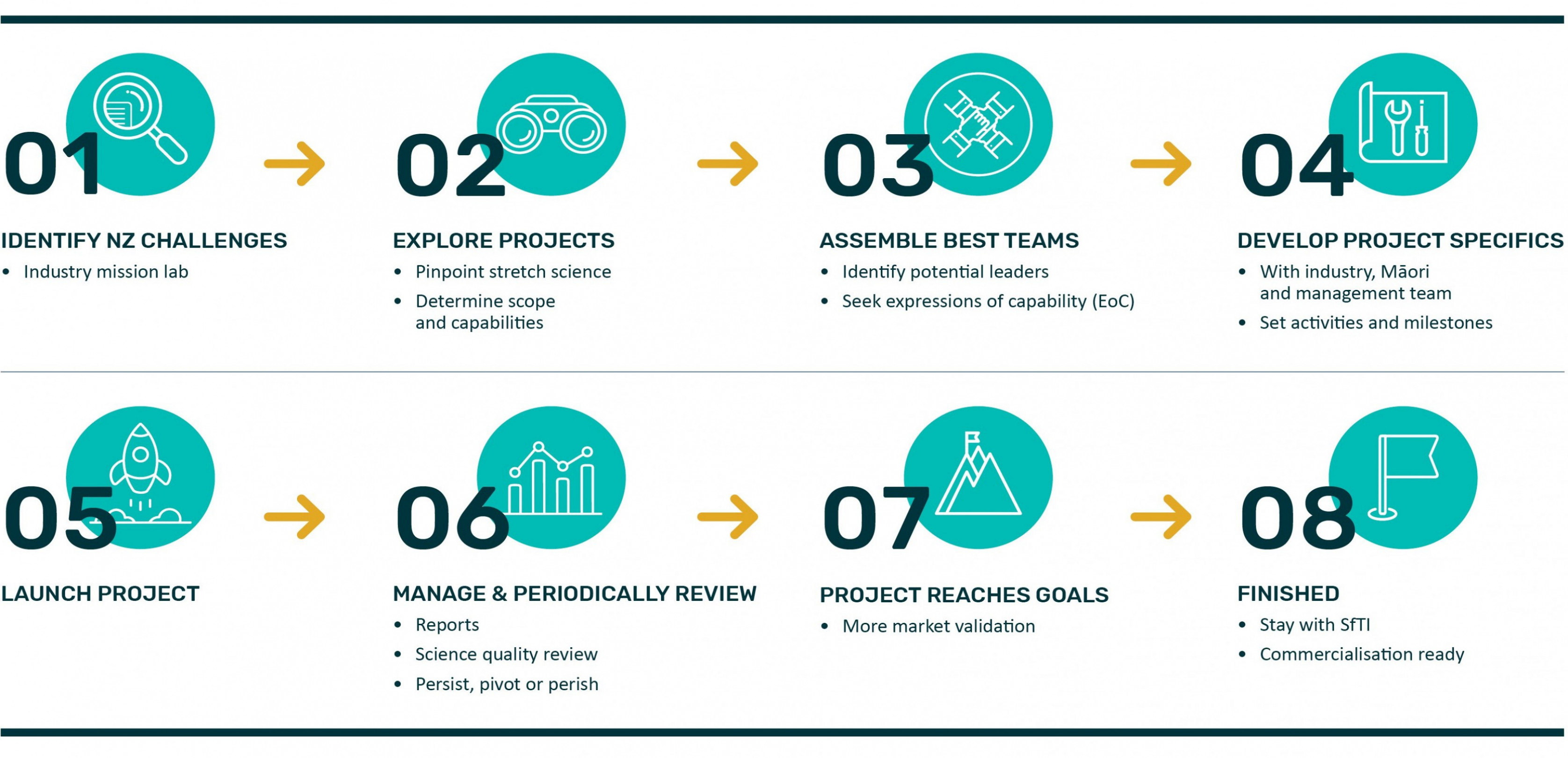Spearhead project development process
Spearheads projects are developed in partnership with industry and Māori through Mission Labs. To form our Spearhead projects, we follow a ‘Mission Lab’ and ‘Mission Design’ process.

The purpose of a Mission-led process
The purpose of our Mission process is to develop high-level technology missions that will support the next step change in our economy, and explore opportunities that New Zealand can exploit in the hi-tech sector over the next 10-20 years.
Our Missions need to be sticky (relevant to NZ) and stretchy (complex and challenging).
The aim of our process is to be as collaborative as possible, while continuing to learn and adapt as we go - this may mean at times this process evolves to get the best results. Here’s how it works…
Stage 1 - Mission Labs and mission identification
Mission Labs are facilitated events that bring together leaders from industry and Māori organisations to decide on high-level missions for SfTI to pursue. This is where we put high-level ideas to the test and make sure that they are broadly supported by industry and Māori. Read reports from the 2017 and 2018 Mission labs.
Stage 2-4 - Mission Design
Stage 2
From the Mission Labs we continue to work together through lots of consultation to fully scope the mission topic and identify the technological research that could support the mission, as well as gauge interest from the research community.
Stage 3
The next stage of Mission Design is to select and form best research teams to help us hone the mission toward a Spearhead project. This involves aligning researcher capabilities with our mission to build new cross-disciplinary, multi-organisational teams.
This process is not typical for New Zealand science. Instead of asking research teams to compete for funding, we pose a mission identified from the Mission Lab and then ask researchers for expressions of capability to be part of a Spearhead project team. This is a unique opportunity for researchers to bring their capability to the Mission Design workshop, not a specific project.
Stage 4
The researchers then work with the SfTI Leadership Team in a Spearhead planning workshop. The purpose of this workshop, and the post-workshop proposal development stage, is to refine the focus of the mission to form one brand new Spearhead project.
That can be a challenge for some – to work in a truly new, inter-disciplinary team, however SfTI is there to support the researchers through this journey.
Stage 5 - Launch project
From there we launch the Spearhead projects, after Board approval.
Stage 6 - Manage and periodically review
The progress and health of a Spearhead project is measured against key milestones (critical steps) through a combination of six-monthly reports and online performance tools. SfTI recognises that not all research will go to plan and if necessary, a pivot can be negotiated to ensure the desired research outcomes are achieved.
A Science Quality Review is carried out on all projects by an independent panel of local and international science experts to provide assurance to the SfTI Board that the Spearheads are meeting SfTI’s goals of ‘sticky’ (relevant and specific to New Zealand) and ‘stretchy’ (complex and challenging) research. The Review typically occurs around the middle of the five-year research phase, and actionable feedback is provided to all teams.
Stage 7 - Project reaches goals
SfTI’s Commercialisation Development Manager will work alongside the Spearhead leaders and the relevant technology transfer offices (TTOs) to guide research achievements towards investor readiness and/or economic impact.
Stage 8 - Finished
SfTI is a collaborative community that remains connected with researchers after a Spearhead project has finished. For example, participating in further research, collaborating with other teams, or joining select Capacity Development events.